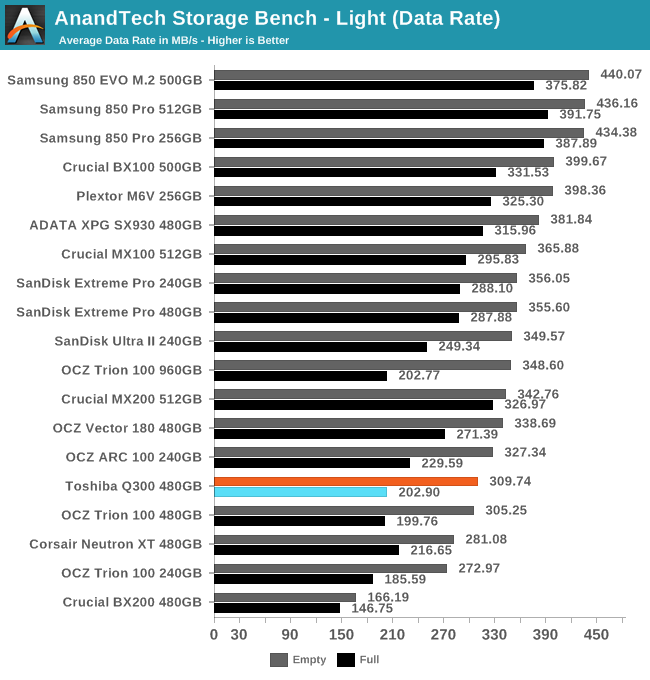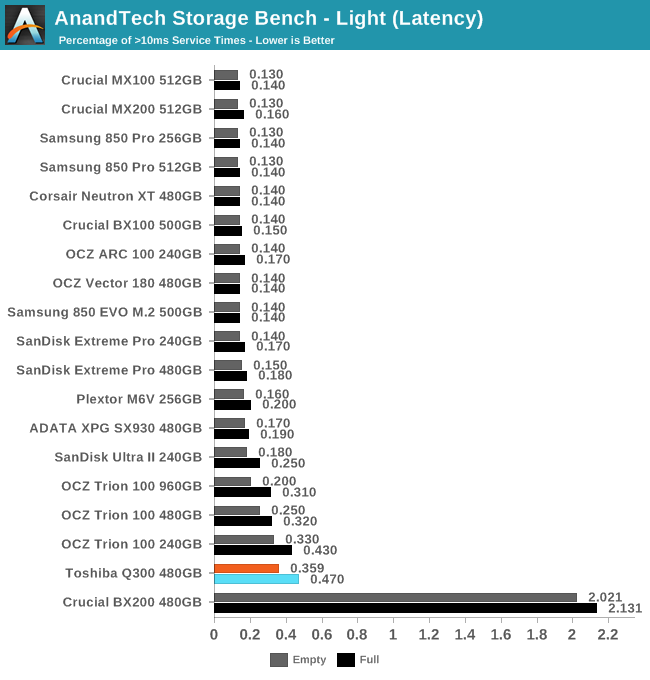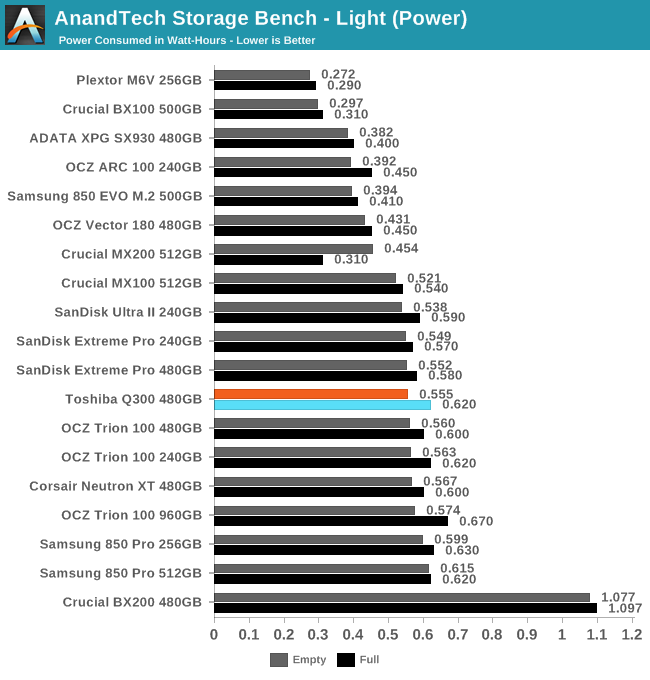The Toshiba Q300 SSD Review: Toshiba Becomes a Retail Brand
by Billy Tallis on February 26, 2016 8:00 AM ESTAnandTech Storage Bench - Light
Our Light storage test has relatively more sequential accesses and lower queue depths than The Destroyer or the Heavy test, and it's by far the shortest test overall. It's based largely on applications that aren't highly dependent on storage performance, so this is a test more of application launch times and file load times. This test can be seen as the sum of all the little delays in daily usage, but with the idle times trimmed to 25ms it takes less than half an hour to run. Details of the Light test can be found here.

The performance rankings for the ATSB Light test are similar to the more intense tests, but the spread is much smaller and the difference between starting with an empty or full drive is much larger. A low-end MLC drive usually won't provide noticeably better performance than the Q300 on workloads this light.


The latency of the Q300 is again near the bottom of the charts and worse than the Trion 100, but even for a full drive the average is only twice that of the best MLC SATA drives. The Q300 is underperforming for its capacity class, but is still reasonable for a SSD.

On light workloads like this, most drives don't stand out from the crowd in terms of energy efficiency. The top performers are mostly drawing proportionately more power and end up using the same amount of energy.










30 Comments
View All Comments
bill.rookard - Friday, February 26, 2016 - link
MX100's are awesome drives, I have a pair in my webserver with a M4 for the boot drive. Sadly, the whole issue appears to be (with the exception of Samsungs drives) the TLC. When having to account for the 8 different voltage states required for 3 bit per cell it seems that the controllers are not up to the task of getting things done quickly.I'm thinking widespread adoption of V-nand (regardless of manufacturer) along with MLC in a larger lithography will wind up being the perfect storm of capacity, price, speed and endurance.
Arnulf - Friday, February 26, 2016 - link
TLC cells have 8 distinct voltage levels per cell to make up for 3 bits of information, not 3.hojnikb - Friday, February 26, 2016 - link
thats what he said.kmmatney - Friday, February 26, 2016 - link
No, he said 3, not 3vladx - Friday, February 26, 2016 - link
"No, he said 3, not 3"Huh?
boozed - Friday, February 26, 2016 - link
It's really quite simple. He said 3, not 3.extide - Friday, February 26, 2016 - link
I think what we will see is 3D TLC in pretty much all mainstream stuff, and 3D MLC in the high performance stuff.Samus - Friday, February 26, 2016 - link
It's too bad the MX100 and BX100 are harder and harder to find, when the MX200 and ESPECIALLY the BX200 are inferior.leexgx - Friday, February 26, 2016 - link
the BX100 its perfect for laptops as its super power efficient, the MX100/BX100 is the most use the most power SSD (the Adata Sp550 also uses the BX200 controller)leexgx - Friday, February 26, 2016 - link
ops!! MX200/B200 or any SSD that uses TLC with SLC cache seem to be extremely high power usage, for minimal overall speed boost (and higher chance of data loss due to SLC/TLC data movement)